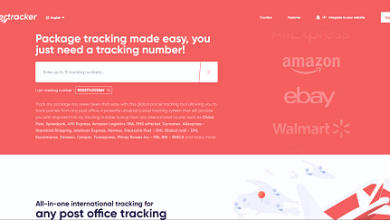Why large companies need Kubernetes

When releasing digital services, even large businesses are forced to develop and bring new products to the market quickly, while not forgetting about the quality of customer service – this is the only way to survive in a highly competitive environment. It is important also to immediately receive additional IT resources when the load on services increases, and not overpay for them during downturns in user activity.
Technologies such as microservices and containerization help with this, and Kubernetes is used to manage them – this tool has already become a development standard and allows IT departments to create advanced architectures to achieve the company’s business goals.
Let’s see how Kubernetes is used and what benefits it gives.
Rapid time-to-market combined with efficiency in development
Kubernetes permits you to manage containers centrally, that means it may accelerate and simplify the introduction of new goods to the market, as well as provide an efficient process of development and testing. It also enables developers to standardize procedures and employ a variety of out-of-the-box solutions, reducing time-to-market.
For modeling and reporting, application administration, and CI/CD development, among other things, DevOps engineers and developers may leverage a number of Kubernetes-compatible technologies. Working in the IT department is more convenient, and the organization reaps the benefits of modern technology.
Grid Dynamics and Amazon Web Services (AWS), for example, collaborated to develop a Cloud Conversion Starter Kit that facilitates EKS migration from Pivotal Cloud Foundry (PCF) to AWS Elastic Kubernetes Service (EKS) quickly.
Among the largest companies that actively use Kubernetes today are Airbnb, The New York Times, J.P. Morgan, Adidas, and many others.
Automated resource allocation to seamlessly handle traffic and user growth
When the strain on IT services varies, such as when traffic increases during a sale, the system must be scaled — that is, extra resources must be added to cope with the new load.
Kubernetes can grow the IT system according to the application’s demands, such as incoming traffic and processing load. This implies that at peak periods, the application will nearly instantaneously receive the resources it requires, and it will not waste time and money during less busy hours.
The firm does not overpay for power when it is not required, i.e., it reduces IT expenses by increasing utilization by 2-3 times, and it does not risk losing consumers because the program pauses during high demand.
Real examples are Tinder, Spotify, Pokemon Go, etc.
The capacity to swiftly incorporate new technologies
Kubernetes makes it easier to adopt and use a variety of technologies that are currently assisting businesses in improving service development efficiency and quality. Also, to recruit the most sophisticated IT-specialists to the company’s workforce, who are eager to work with cutting-edge technologies.
Here’s what Kubernetes pairs well with:
- Cloud applications, services, and hybrid clouds. Kubernetes makes moving apps to the cloud easier, and you may manage them both locally and remotely using it. This is especially true if a corporation employs a hybrid infrastructure, such as cloud-based test environments and on-premises development.
- AI and ML. Building and training neural networks requires a lot of computational power. With Kubernetes, you can use resources efficiently and do all the calculations inside the cluster. All that is required of a data scientist or machine learning engineer is to clean the data and create the code. The rest will be done by Kubernetes.
- Big data. Big data is a term used to describe large amounts of information Kubernetes is perfect for Data Science and working with large data since it is built primarily for heavy workloads and interfaces easily with cloud Big Data solutions. Analysts at the organization will have an easier time creating pipelines for working with large data and extracting the information they want.
Why deploying Kubernetes is better in the cloud
Switching to Kubernetes is not so easy: to use its capabilities at 100%, you need to work on the architecture, you need the help of highly specialized experts, the deployment process out of the box can take several weeks.
The easiest way to migrate to Kubernetes is to use it as a ready-made cloud service. In the cloud, configured clusters can be launched in just ten minutes, just as you can quickly deploy applications and company services. In addition, the cloud platform will allow you to use unlimited scaling – that is, even highly loaded services can count on the fact that the necessary resources will be allocated instantly and without problems.
The cloud model also allows you to save on costs by paying only for the resources you use and reducing the costs of test environments by 2-3 times, while quickly getting the right resources and services.




